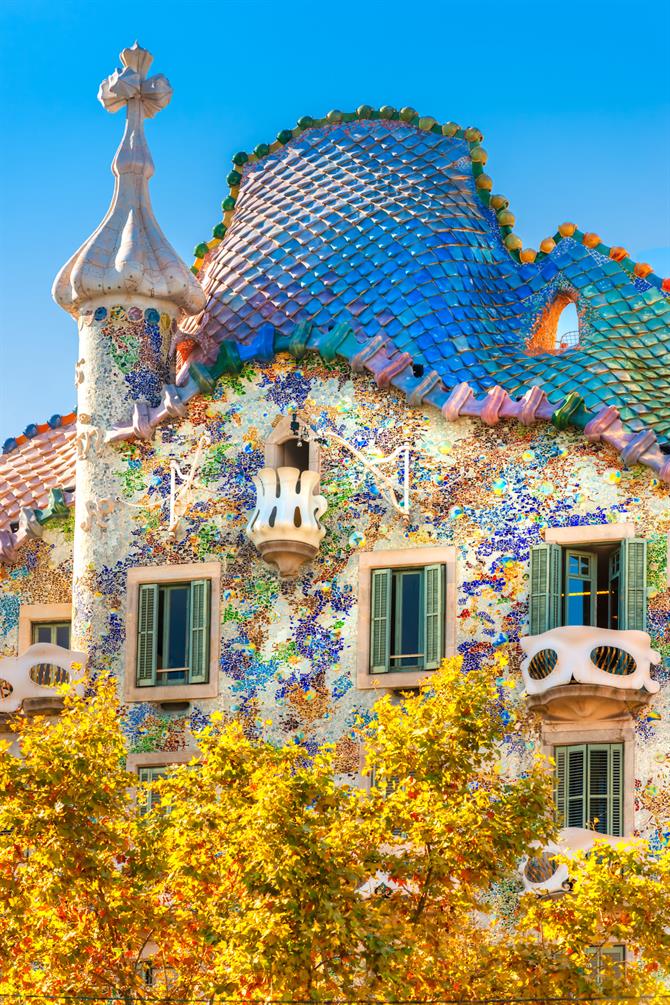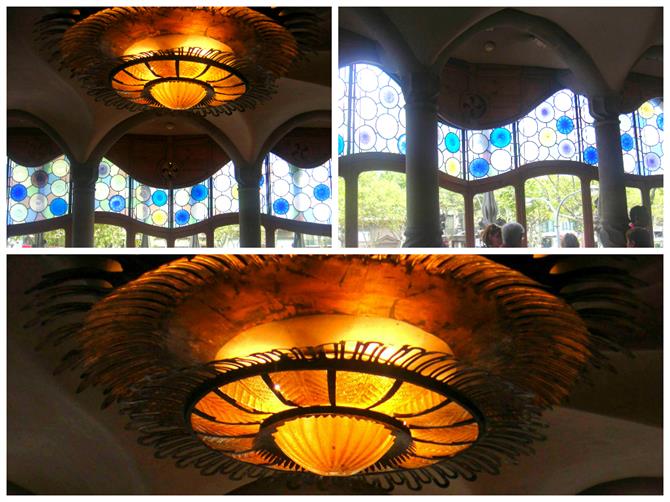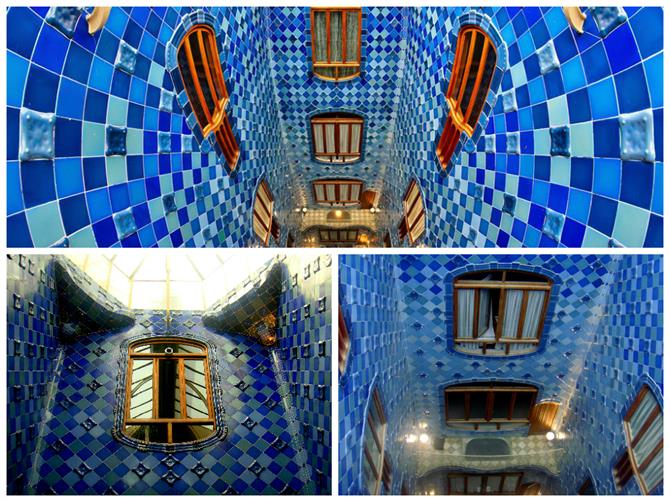A cosmopolitan city of great cultural and architectural wealth, Barcelona is a popular holiday destination.
Among the most famous monuments in Barcelona, we of course have to mention the works of the brilliant modern architect Antoni Gaudí, who marked the city, and even the country, with his particular style. One of his most famous works is Casa Batlló, which is among the list Gaudí works recognised by the UNESCO World Heritage Centre since 2005. The colourful house is an essential stop when you stay in a holiday apartment in Barcelona.

Let's discover this extraordinary home that has become a benchmark for modernism in Barcelona and around the world.
History of Casa Batlló
Casa Batlló was originally built in 1875, but it did not resemble the building we know today. In 1903 it was re-bought by a wealthy Barcelona businessman named Josep Batlló i Casanovas.
The new owner's first plan was to destroy the building and use the land to build a new home for him, his wife and their five children. In the end, Josep Batlló decided to renovate the building rather than destroy it, using the main part for him and his family, and having the rest of the building divided into several small apartments for rent.
For the renovation, he decided to hire architect Antoni Gaudí. His choice was not at all by chance - Gaudí was already well known as he was at the head of several Barcelona projects, including the Sagrada Familia, Torre Bellesguard and Park Güell.
And so, Gaudí's work on Casa Battló began in 1904, lasting until 1906.
The work
Gaudí centred his work around the facade, main floor, courtyard and terrace, and also built a fifth floor to add rooms for laundry and storage.
- The facade
We all know the saying "You'll never get a second chance to make a good first impression". Well, the phrase exists in Spainish too - Nunca tendrás una segunda oportunidad de causar una primera buena impresión. Going from this saying, you could say that Casa Batlló was a complete success; the facade gives an excellent first impression (and the rest of the house doesn't disappoint either).

The facade, whose fantastical style clearly shows the imagination of its architect, is made from a combination of stone and coloured glass, with undulating shapes reminiscent of nature.
On the facade, the huge windows that highlight the second floor will likely catch your eye first. Behind these windows is the main section of the house where the Batlló family once lived.
Another characteristic of the facade is its decorative glass and bright-coloured ceramic, which give different visual effects depending on the light of day.
We shouldn't forget to talk about balconies either. These are a big part of what give the building its unique character and originality. They are made of cast iron and painted ivory. In total, the facade has nine balconies, in addition to four smaller balconies that are paired with the large main windows.
The upper part of the facade appears to be shaped like an animal - some say that it is a dragon - with large scales, made of ceramic and red, blue and green coloured glass. To the top left, a tower rises above the home and brings the work together as a whole. It it is shaped similar to a garlic bulb and is topped with a cross.
- The interior
To access the interior of the building, Gaudí created three very different entrances: one for access to the rental apartments, one for the store and the last to go to the basement.
The main entrance was divided into two halls to give access to rental apartments and another for the private section of the Batlló family. To access all other floors, there is a majestic oak staircase that contains carved elements resembling a prehistoric animal's vertebrae - perhaps that of the dragon from the upper terrace of the facade.
On the first floor, behind the facade's huge windows is the Balltó family's main living space, which directly faces Passeig de Gràcia. We should also notice the raised ceiling in the shape of giant spiral, bringing to mind a marine atmosphere. The space's large chandelier symbolises the sun.

In the central part of the building there is a courtyard called Patio de Luces (the Court of Lights), which served both as a source of light and ventilation. At 13 by 4 metres wide and 26 metres high, it is entirely covered with a blue and white ceramics, giving the impression of being in an underwater cave.

- The roof
To access the roof, you have to take a winding staircase. In the attic, Gaudí installed service rooms, such as a laundry room and a room to dry clothing, etc.
As for the roof, it is another work of art in itself, especially because of the 27 chimneys that are organised into four sets of six, each measuring 10 metres high and resembling mushrooms. The fireplaces are decorated and protected by glass and ceramics, coloured with blue hues evoking clouds and rain, bringing us back to a main theme, water.

Practical information
Casa Batlló can be found at 43 Passeig de Gràcia, one of the most important avenues of central Barcelona.
The museum is open all year from 9:00 to 21:00, without any interruptions. The museum closes to the public at 20:00.
Entrance tickets cost €21.50 for adults, €18.50 for students and youth (7-18 years), and entrance is free for children under 7 years old and seniors (65 +). The audio guide costs €3.
It is strongly recommended that you buy your tickets online before your stay to avoid long queues.
How to get there
There are four ways to get to Casa Batlló:
- By bus, with lines H10, V15, 7, 22 and 24, with the tourist bus or City Tours bus (Barcelona Tours), stop 3A
- By metro, Passeig de Gràcia station: L2, L3 and L4.
- By train from Gare Passeig de Gràcia
- By foot to Passeig de Gràcia, 43, 08007 Barcelona
Map - where is Barcelona's Casa Batlló
Additional information
Here are other travel articles about Barcelona that could interest you and help you prepare for your stay in this beautiful city.
- Cheap Eats in Barcelona: tips for eating cheaply in Barcelona
- 48 Hours in Barcelona: what to see and do in Barcelona over a weekend
- The Ultimate Gaudí Guide: a guide to known and unknown Gaudí buildings in Barcelona
- Barcelona city guide: Gràcia, an independent 'city': visiting Barcelona's Gràcia district
- Barcelona's Palo Alto Market caught on Instagram: things to do at Barcelona's hipster market
- BYOB: Bring your own bike (into Barcelona's bike-friendly bars): a guide to bike-friendly bars, cafés and restaurants in Barcelona
- Everything you need to know about Gaudí's Park Güell in Barcelona: the title says it all
